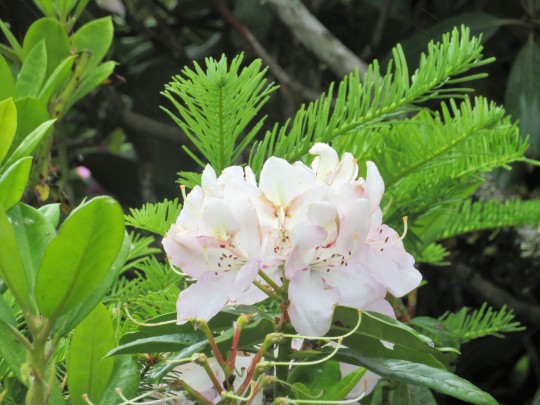A LITTLE HISTORY
Currently, there are 19 Pueblos in New Mexico that trace their ancestry directly back to the Ancestral Puebloans: Acoma, Cochiti, Isleta, Laguna, Nambe, Ohkay Owingeh, Picuris, Pojaque, Sandia, San Fellipe, San Ildefonso, Santa Ana, Santa Clara, Santo Domingo, Taos, Zia, and Zuni. (Hopi are also ancestors of the Ancestral Puebloans, but their Pueblo and reservation are in Arizona.) Some of the New Mexico tribe names are better known than others; some stand out for their unique art whether as jewelry, baskets or pottery. Acoma and Taos are probably the two most well-known pueblos in New Mexico and throughout the world.
Tourism is an important industry for both Pueblos, and they welcome the opportunity to educate others about their history and culture. Years ago, I visited both Acoma and Taos Pueblos on different trips. My visits confirmed what I have always valued about native cultures. Their sense of community. Their connection to and appreciation of Nature. Their historical feats of engineering and astronomy. Their artistry demonstrated through their jewelry, pottery and other artifacts. But especially their perseverance. Both Acoma and Taos Pueblos have been continuously inhabited since about the year 1000. And their ancestors have been in the area since before Christ. Their art, culture, religion, and language all continue on. Remarkable.
ACOMA PUEBLO
Driving to Acoma Pueblo–also called Sky City–as It Sits Atop Its Plateau

Acoma Pueblo is the most southwestern of the pueblos, sitting about 60 miles west of Albuquerque. It is also one of the remaining pueblos that has been continuously populated since at least the year 1200. It sits atop a plateau that is roughly 360 feet high. The word Acoma means “the place that always was.” In 1540, Alvarado, an explorer working with Coronado, offered this description of this stronghold sitting high atop a plateau:
Acoma is “the greatest stronghold ever seen in the world. The natives. . . came down to meet us peacefully, although they might have spared themselves the trouble and remained on their rock, for we would not have been able to disturb them in the least. . . . The city was built on a high rock. The ascent was so difficult that we repented climbing to the top. The houses are three and four stories high. The people. . . have abundant supplies of maize, beans and turkeys like those of New Spain.”


Although visited by the Spanish in the 1540s, Acoma was not invaded until several months after the arrival of Juan de Onate y Salazar in 1595. When Onate’s men demanded food from the Acomas, food that was needed for the tribe to survive the winter, a skirmish took place. Eleven Spaniards were killed, including Onate’s nephew. In retaliation, the village and its provisions were burned, 600 people were killed, and another 500 men, women and children were taken as prisoners and sentenced to servitude. Each warrior under the age of 25 had his right foot amputated. These atrocities are some of the war crimes that Onate was eventually charged with when he was recalled to Mexico years later.

Google Image
In 1998, a statue of Onate was erected, paying tribute to him as the founder of New Mexico. He served as the area’s first governor from 1598 to 1608. Not surprisingly, many Puebloans protested the action. Part of the protest was conducted one night: Someone used a chainsaw to cut the right foot off the bronze statue. Seems a fitting action to me!
Although the lands held by the Acoma Pueblo originally totaled nearly 5,000,000 acres, Acoma today retains control over less than 10% of that original total. The 2010 census says 4,989 native people live in the immediate area surrounding Acoma. About 30 of the tribe members still live in the actual dwellings on top of the plateau without electricity, running water, and sewage. In 1960, Acoma Pueblo was named a National Historic Landmark, and in 1966 it was placed in the National Registry of Historic Places.
VIEWS OF THE PUEBLO AND AREA
Mount Taylor

Enchanted Mesa from a Distance–about 2.5 Miles from Acoma

Tradition Says the Acoma Tribe Lived on Enchanted Mesa Until Storms Blocked Access

Stegosaurus Rock


 Currently, Acoma allows tourists to visit the pueblo on guided tours. A main attraction is its church called the San Esteban Del Rey Mission. It is the largest southwest mission, and its construction was started in 1629 with the arrival of Father Juan Ramirez. Natives were conscripted into building the massive structure, carrying logs 40 miles from Mount Taylor for use atop the plateau. All sand needed for the construction also had to be carried to the top of the plateau. The Acoma Pueblo participated in the Pueblo Revolt in 1680.
Currently, Acoma allows tourists to visit the pueblo on guided tours. A main attraction is its church called the San Esteban Del Rey Mission. It is the largest southwest mission, and its construction was started in 1629 with the arrival of Father Juan Ramirez. Natives were conscripted into building the massive structure, carrying logs 40 miles from Mount Taylor for use atop the plateau. All sand needed for the construction also had to be carried to the top of the plateau. The Acoma Pueblo participated in the Pueblo Revolt in 1680.
San Esteban Del Rey Mission



Despite the slave labor and harsh conditions, Acoma Pueblo today attaches cultural significance to its mission. After all, their ancestors built by hand a structure that has stood for nearly 390 years. A group of men called the Gaugashti or “church caregivers” take on the responsibility of maintaining not only the structure but the culture associated with the mission.

Tour Guide
Tourists are able to take a tour through the village, seeing some of the original buildings and pathways. The tours also let you chat with some tribe members and hear about their history and culture. On my visit to Acoma decades ago, the tour guide was a young woman, who was informative and friendly.
Some of the Original Buildings





Original Ovens, Some Still in Use



Street in the Pueblo

Pathway from the Pueblo

Postcard of Women Getting Water along the Pathway, 1920


Google Image Traditional Pottery

Another Traditional Pot Google Image
Acoma tribe members have always been noted as great pottery makers. The traditional pots are impressive. Of course, on my visit, I bought a little pot—being a little smaller than a baseball, it fit easily in my hand. But the intricate detailed design is what captivated me. I loved chatting with Charlie—the artist—about the creative process.
My Delightful Little Acoma Pot Made by Charlie

If you have not visited the Acoma Pueblo—or any of the other pueblos open to the public—add such a visit to your list. It is well worth the visit!






































































































































































































































































































































































































































